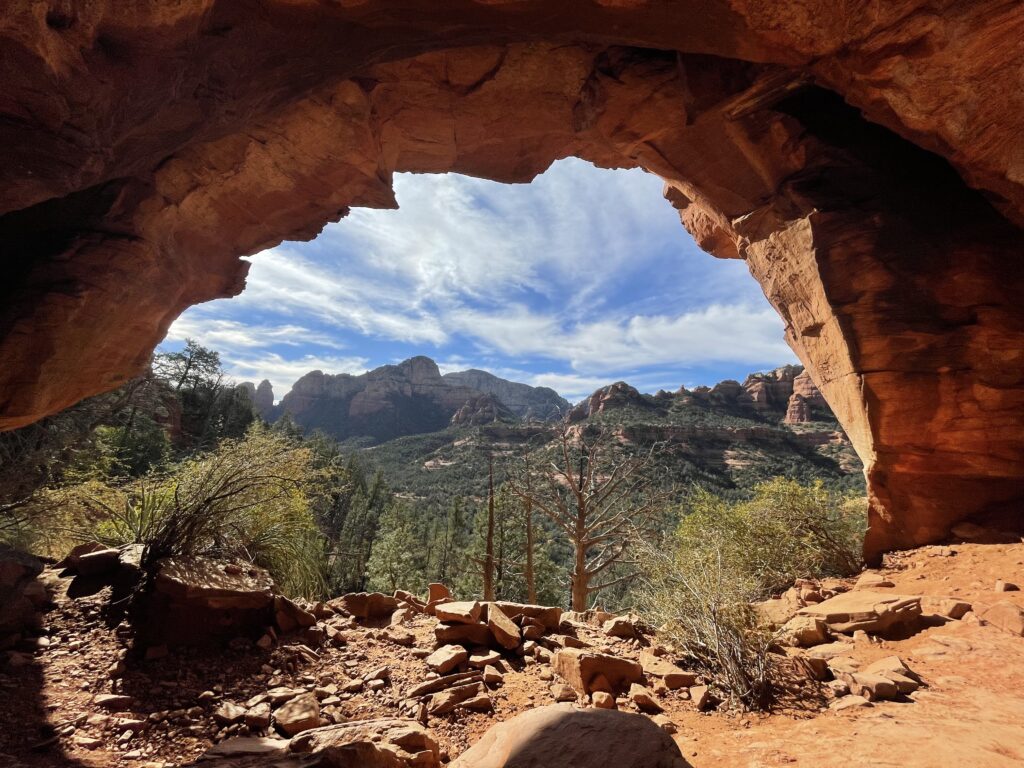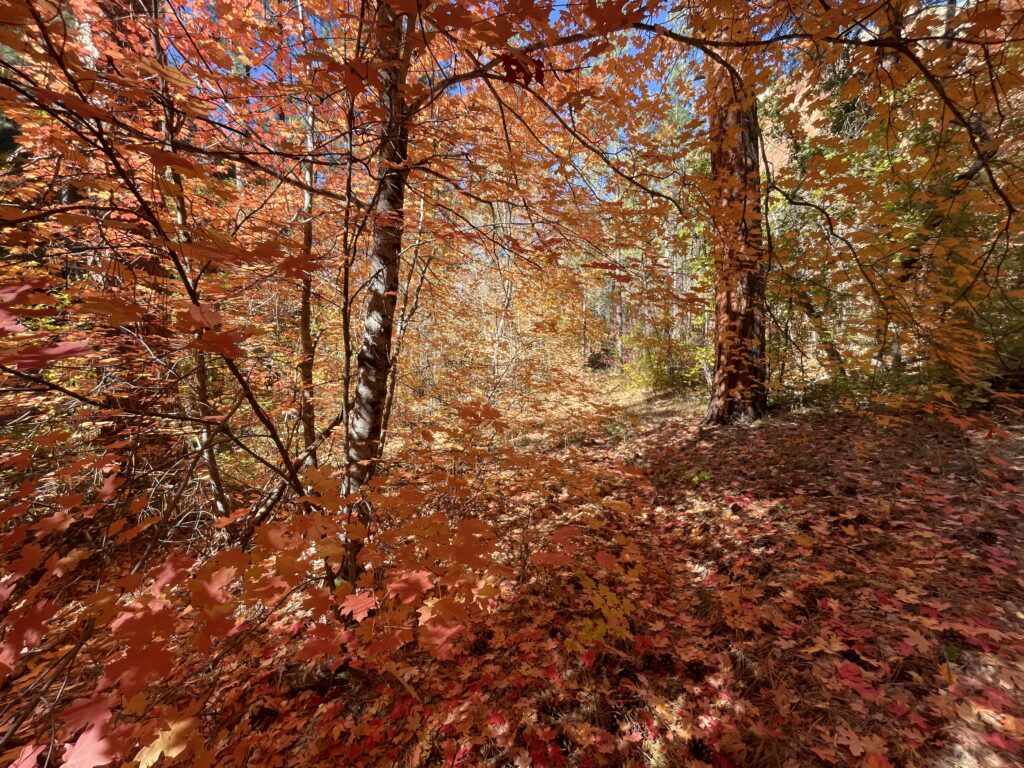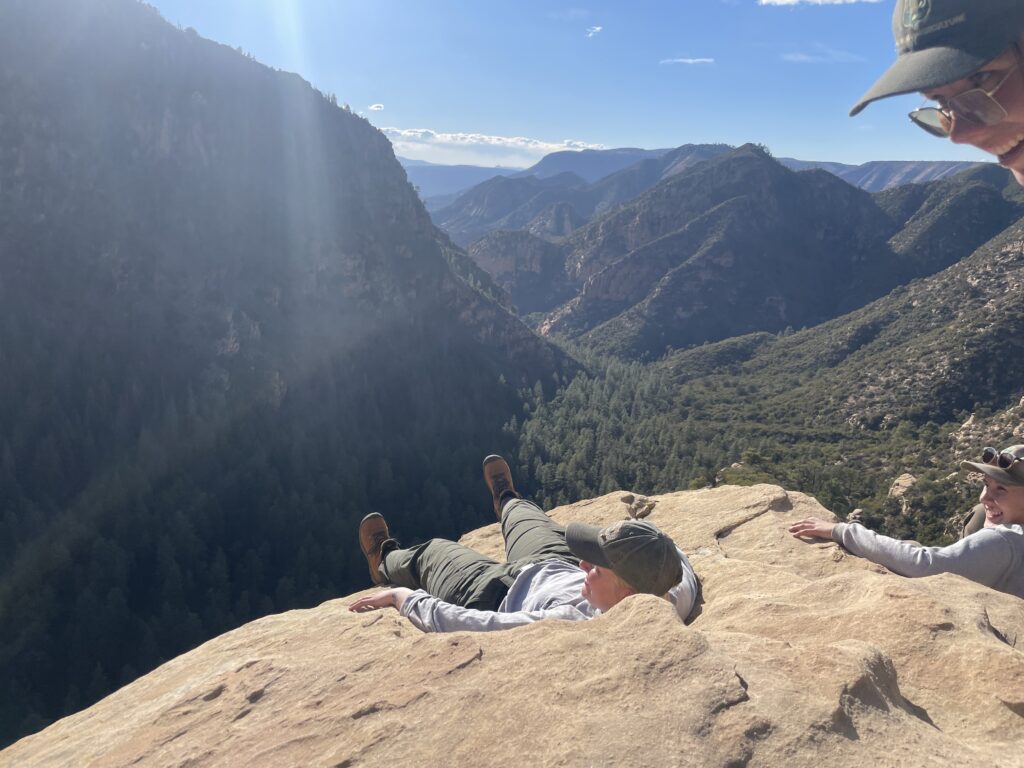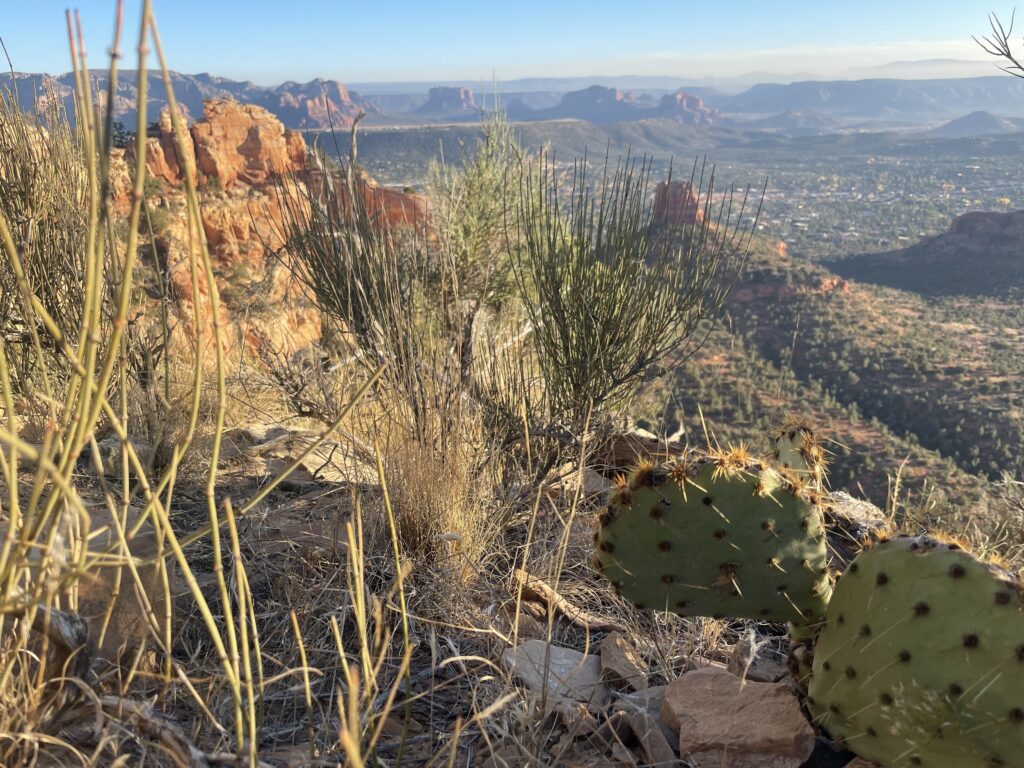
Written by Sam Baggenstos, Conservation & Wilderness Associate.
For the last three and a quarter months I have been trekking throughout the forests, canyons and buttes that surround Sedona, AZ. As outlined in a previous blog post, this project has focused on data collection in five wilderness areas within the Red Rocks District of the Coconino National Forest: Fossil Creek, West Clear Creek, Wet Beaver, Munds Mountain and Red Rock–Secret Mountain. Specifically, I have focused on documenting and/or assessing four different things: system trails, social trails, recreation sites and invasive plants. Here are four things I have learned from collecting data in those four different categories.

Just because a trail is steep doesn’t necessarily mean it’s not sustainable.
For this project I have been hiking the systems trails within the wilderness areas of the Red Rocks District and assessing the sustainability of those trails. After walking an entire trail I split the trail up into segments that make sense, record a GPS track of each segment and fill out assessment on my phone that helps me sort a trail into six different sustainability categories: 1 (very poor), 2 (poor), 3 (neutral), 4 (above neutral), 5 (good) and 6 (very good). Typically if a trail or segment of trail has a very steep grade, then it also has a large amount of erosion. However, there are multiple trails in the Sedona area (such as Bear Mountain and Hot Loop) which have segments that are extremely steep but are also built upon large, stable slabs of bedrock. These sections might be difficult to walk on, but they are nevertheless sustainable since they are mostly immune to erosion. In my estimation this warrants a 5 rating (good).

A small social trail can have a large impact on the landscape.
Social trails (also called user created trails or user developed trails), are paths created by hikers, climbers, bikers and other recreators that are not recognized as official trails by land managers. People create and use these trails for a variety of reasons such as a way to access a campsite, water source or viewpoint. These trails can have a negative impact on the landscape by causing erosion, spreading invasive plants and causing damage to archaeological sites. Something I have noticed when surveying social trails in the Red Rocks District is that sometimes a rather faint and narrow social trail leads to an entire network of interconnected trails. This might be happening for a variety of reasons but one of them is that since social trails are not usually receiving maintenance they often get very brushy, causing people to take a variety of paths to get to the same place. In this way a singular trail can turn a stable slope into an eroding slope.

Every large recreation site starts as a small recreation site.
For the purposes of wilderness data collection a recreation site is any specific location within wilderness that is receiving enough repeat visitor use so that the landscape shows wear or damage. This could be as mild as a small patch of flattened grass or as extensive as a thousand square feet of mineral soil with five or six fire rings and dozens of exposed roots and damaged trees. It became apparent to me while documenting the various recreation sites throughout the Red Rocks District that there can be a snowball effect when it comes to human impact in an area. What starts as just a fire ring turns into a fire ring with a tent pad. Then, future groups are digging in more tent pads and adding more fire rings. At some point someone decides to dig a latrine. And suddenly, the small recreation site turns into a large one. This is another reason why it is important to practice leave-no-trace principles. It helps keep wilderness wild by preventing repeated use in a particular area.

Learning about invasive grasses is like opening Pandora’s box
Up until this project my interaction with invasive plants in Arizona has mostly centered around the more well known and larger species such as tamarisk, tree of heaven, giant reed, Himalayan blackberry and others. Over the past three months my plant ID has expanded to include grasses such as red brome, cheatgrass, Japanese brome, yellow blue-stem and Johnson grass. This knowledge has made me realize how inundated the Red Rocks District is with invasive plants. Additionally, some of the above grasses have a large and long-lasting seed bank. This, paired with the widespread occurrence of some of these grasses, makes eradication and control certainly time-consuming and perhaps infeasible. Because of this, land managers have to make the tough choice of which plants to focus on. As much as it would be incredible to see the complete eradication of all invasive plants, there are only so many resources available.
This fall, Wild Arizona, with the help of volunteers and forest service seasonal trail crew members, managed to collect a large amount of wilderness data for the Red Rocks District. However, there are still gaps that exist in the data, particularly in the Red Rock-Secret Mountain Wilderness. If we manage to secure another round of funding Wild Arizona will return to continue the work in the spring.








